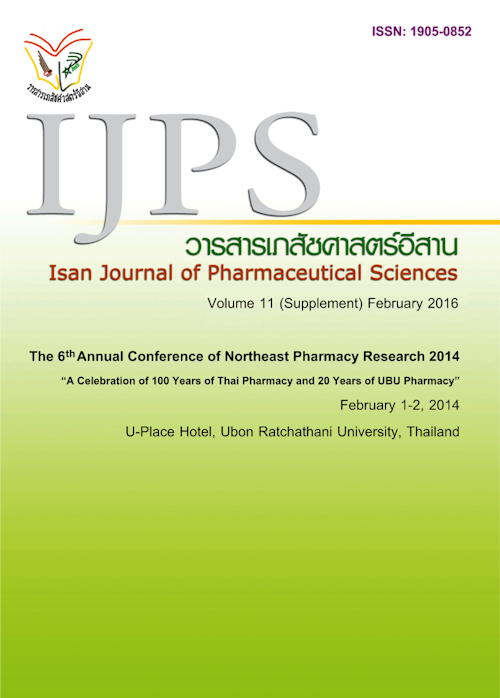Prevalence, Risk Factors, and Management Of Hyponatremia In Schizophrenic Patients At Prasrimahabhodi Psychiatric Hospital
Main Article Content
Abstract
Introduction: Hyponatremia is a common problem in schizophrenic patients. However, data of the prevalence, associated risk factors and management of hyponatremia in this population was limited in Thailand. Materials and Method: Retrospective cross-sectional survey was designed. Data collection was conducted in 1,666 schizophrenic patients who aged between 15 to 60 years old at Prasrimahabhodi psychiatric hospital, between April 1, 2011 and April 30, 2013. One hundred patients were randomly sampling then the patients’ data from electronic medical and paper-based medical records were extracted. The patients with a diagnosis of syndrome of inappropriate antidiuretic hormone or other disorders which affected serum sodium concentration before April 1, 2011 were excluded. Prevalence rate was calculated. Chi-squared test was used to determine the risk factors of hyponatremia. Results: The prevalence of hyponatremia among schizophrenic patients was 86/1,666 (5.16%). Risk factors which significantly associated with hyponatremia were alcohol consumption, caffeinated beverage consumption and anticonvulsants receiving (p-value 0.046, 0.010 and 0.015, respectively). Thirty-seven patients (43.02%) did not receive any management, 47 patients (54.65%) were managed by adding sodium chloride tablets (74.47%), selecting sodium-containing intravenous fluid (34.04%), adding salt to diet (4.25%), water restriction (4.25%), quitting caffeine (2.13%) and clinical observation (2.13%). Conclusion: The prevalence of hyponatremia among schizophrenic patients in this study (5.16%) was similar to that of previous studies. Alcohol consumption, caffeinated beverage consumption and anticonvulsants receivingare significantly associated with hyponatremiain schizophrenic patients. Only half of hyponatremia patients were managed, so the clinical practice guideline should been developed to support the screening and management of hyponatremia in this population.
Article Details
In the case that some parts are used by others The author must Confirm that obtaining permission to use some of the original authors. And must attach evidence That the permission has been included


